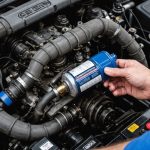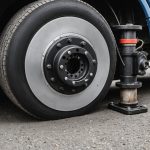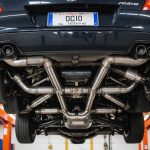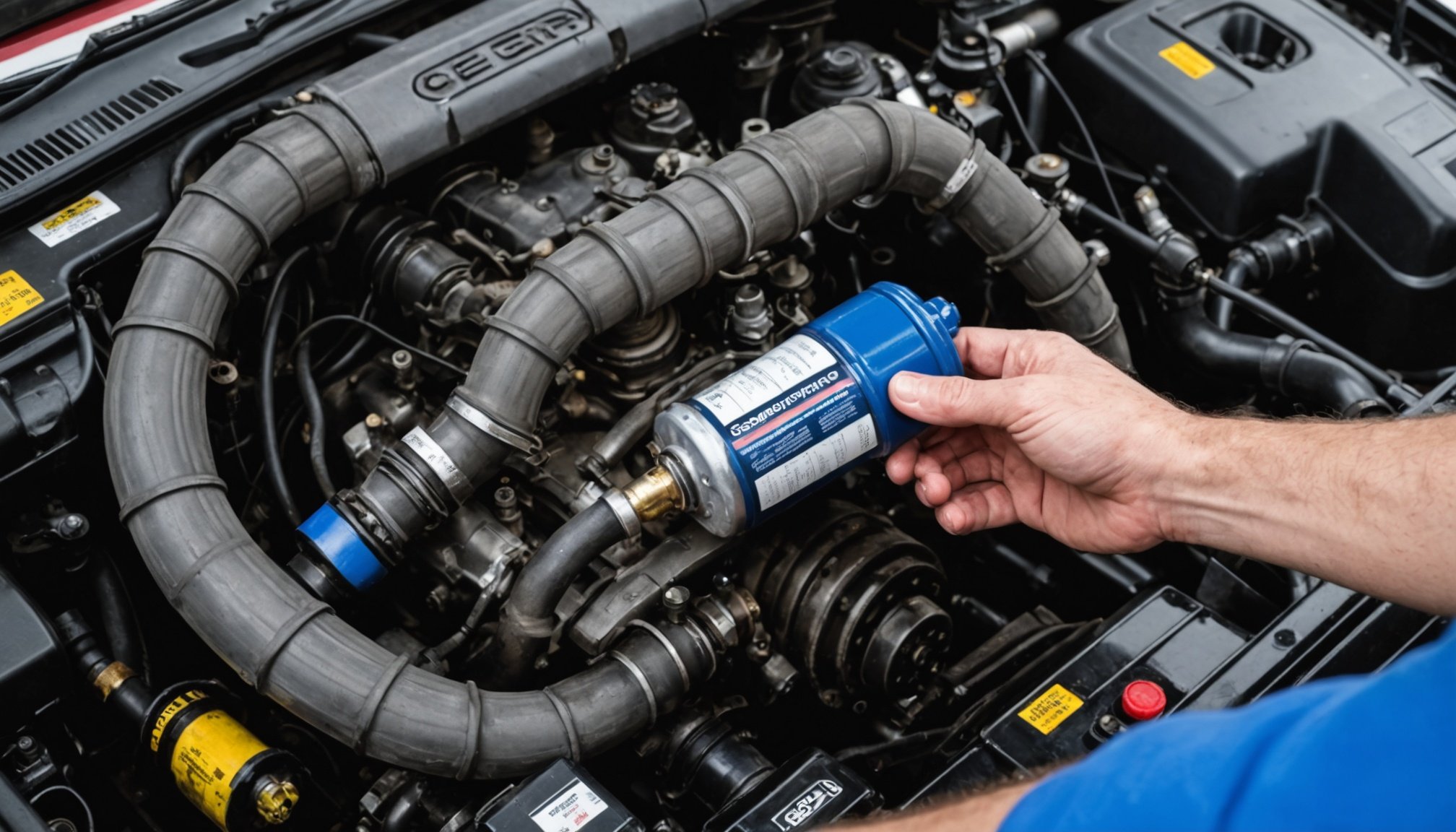Importance of the EGR System
The EGR system, or Exhaust Gas Recirculation system, plays a pivotal role in reducing vehicle emissions and enhancing fuel efficiency. By recirculating a portion of the engine’s exhaust gas back into the combustion chamber, the EGR system helps to lower nitrogen oxide emissions, which are harmful pollutants. This process not only helps in emissions control but also contributes to improving overall vehicle performance.
Maintaining a well-functioning EGR system is crucial for optimal vehicle performance. A malfunctioning system can lead to decreased engine efficiency and increased fuel consumption. Furthermore, when the EGR system isn’t working correctly, there’s a risk of increased emissions, which can result in failing vehicle inspections and potential fines.
Additional reading : Essential Tips for Replacing Windshield Wipers: Ensure Crystal-Clear Visibility in Stormy Conditions
Regular EGR system maintenance is essential to prevent these issues and ensure your vehicle runs smoothly. Proper maintenance includes checking for clogs or blockages, which can hinder the flow of exhaust gases and reduce the system’s effectiveness. Additionally, keeping the system clean can help in maintaining your vehicle’s fuel efficiency and longevity.
In conclusion, investing time in EGR system maintenance not only supports a cleaner environment but also enhances your vehicle’s performance and reliability.
Also to see : Essential Guide: Safely Replacing Your Rearview Mirror in ADAS-Equipped Vehicles
Regular Maintenance Techniques
Effective EGR system care is vital to maintain vehicle performance and reduce emissions. Regular inspection and cleaning of the EGR system ensure your car runs smoothly and efficiently. It is generally recommended that the EGR system is checked and serviced every 30,000 miles or during a scheduled service, whichever comes first.
Step-by-Step Guide for EGR Valve Cleaning
- Safety First: Ensure the vehicle is cool and parked on a flat surface. Disconnect the battery for safety.
- Locate the EGR Valve: Refer to the vehicle’s manual for the precise location.
- Remove the Valve: Carefully detach any connections and unscrew the bolts securing the valve.
- Clean the Valve: Use a specialized solvent to remove carbon build-up. A soft brush may assist in scrubbing stubborn deposits.
- Re-installation: Once dried, reattach the valve and connections, ensuring everything is secure.
Investing in quality parts is crucial for effective vehicle upkeep. Using parts from reputable manufacturers enhances system longevity and reduces the chances of malfunction. Following these maintenance tips not only improves car health but also aligns with environmental obligations by reducing harmful emissions.
Troubleshooting Common EGR Issues
When dealing with EGR troubleshooting, understanding and diagnosing performance issues is crucial for maintaining your vehicle’s efficiency.
Symptoms of a Faulty EGR System
A compromised EGR system often presents various symptoms. These include increased engine emissions, rough idling, and a noticeable drop in fuel efficiency. Misfiring during acceleration and the illumination of the check engine light are also common indicators. Noticing these signs early can prevent further engine damage.
Diagnostic Tools and Techniques
To effectively identify problems, a few essential tools are necessary. These include a digital multimeter, OBD-II scanner, and vacuum gauge. These tools help in assessing electrical connections, reading engine codes, and checking vacuum lines. Understanding how to interpret these readings is vital in the diagnostic process.
Step-by-Step Troubleshooting Guide
Overview of common symptoms indicating EGR failure. Start by scanning for diagnostic trouble codes with an OBD-II scanner.
Essential tools needed for diagnosing EGR problems. Use the vacuum gauge to test for leaks, indicating possible valve malfunctions.
Process to troubleshoot and resolve issues effectively. If codes suggest an EGR fault, inspect and clean the EGR valve. Replace it if necessary to resolve performance issues and enhance efficiency.
Enhancing EGR System Performance
Optimizing the Exhaust Gas Recirculation (EGR)** system** is essential for superior fuel efficiency and overall vehicle performance. By understanding how EGR optimization can be achieved, you can take significant steps towards improved efficiency.
Modifications and upgrades are among the most effective performance tips. Simple adjustments such as ensuring the EGR valve functions correctly can lead to considerable improvements. Regular cleaning and inspection of the EGR components minimise the risk of blockages that can hamper performance.
Integrating EGR system optimization is crucial when considering the vehicle’s comprehensive performance. A well-optimized EGR system reduces nitrogen oxides emissions and improves engine mileage, which in turn contributes to better fuel consumption. This integration ensures the engine runs smoothly without undue stress from exhaust circulation issues.
Maintaining a clean fuel supply is vital for the EGR system’s efficiency. Contaminated fuel can introduce deposits that affect the EGR valve’s operation. Regular oil changes also play a pivotal role. Clean oil maintains optimal lubrication, reducing friction and wear, thereby supporting the EGR in functioning seamlessly. With these performance tips, your vehicle’s efficiency and longevity can be substantially improved.
Common Pitfalls to Avoid
Facing EGR system mistakes can lead to serious consequences if misdiagnosed. One common issue is overlooking the actual cause of EGR system malfunctions, such as confusing it with other vehicle problems. Accurate assessment is crucial, as wrong diagnosis may lead to unnecessary repairs or even further damage to the vehicle. Maintenance errors often arise when regular upkeep tasks are ignored. Missing scheduled checks or neglecting the replacement of worn-out parts can drastically reduce an EGR system’s effectiveness, potentially causing an increase in harmful emissions, reduced engine performance, or decreased fuel efficiency.
Failing to heed the signs of EGR failure poses significant risks. Symptoms like reduced acceleration, engine knocking, or stalling require immediate attention. Ignoring these signals not only risks engine damage but might also turn minor issues into expensive repairs. Effectively managing vehicle care involves staying informed about these symptoms and addressing them promptly to prevent maintenance errors. This proactive approach ensures the longevity of both the EGR system and the vehicle itself, maintaining optimal performance and safety. By avoiding these pitfalls, drivers can extend the life of their vehicle while preserving its engine function.
Expert Recommendations for EGR Longevity
To ensure the longevity of the EGR (Exhaust Gas Recirculation) system, automotive experts suggest a few proactive steps. Regular maintenance is key. This includes routine checks for carbon build-up, which can compromise system integrity, and ensuring that all components are clean and functioning efficiently. Consistently following these longevity tips can significantly extend the lifespan of the EGR system.
Experts advise investing in quality products such as high-grade EGR valves and cooler modules. These components are more resilient to the heat and acidic conditions within the system. Using recommended technologies like ceramic coatings can also enhance EGR performance by reducing thermal stress.
Periodic professional inspections can further protect the system. Trained technicians can detect and address early signs of wear or malfunction that may not be immediately apparent. This preventative approach not only maintains EGR system integrity but also boosts vehicle efficiency and reduces harmful emissions.
In summary, incorporating these expert advice and strategies will help maintain optimal EGR operation, providing both environmental and cost-saving benefits.











